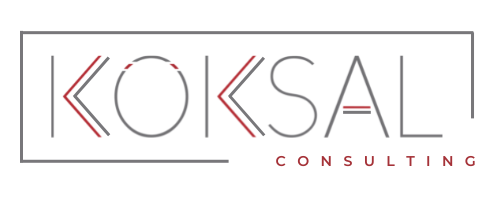Report:
In the district of Çamlıbel in Tokat, news articles have been published about serious complaints among workers in a shoe factory, including nausea, loss of appetite, weight loss, numbness in limbs, and loss of walking ability. It has been reported that more than 10 workers with varying symptoms are undergoing examinations and treatments at Tokat Gaziosmanpaşa University, Ankara Etlik City Hospital, and Ankara Bilkent City Hospital.
The Turkish Thoracic Society Occupational Lung Diseases Working Group, in a written statement regarding the issue, warned that solvents such as toluene, n-hexane, and similar substances used in shoe manufacturing are inhaled into the respiratory system and absorbed by the body due to their volatile properties. The statement emphasized that these chemicals can cause irritation, weakness, fatigue, and nausea, as well as affect the nervous system, liver, and kidney functions.
The Turkish Thoracic Society Occupational Lung Diseases Working Group stated that in addition to high-dose exposure to substances in a short period of time, long-term exposure to low levels of toxins also plays a significant role in occupational diseases. They said, “Exposure to solvents used for adhesion purposes, such as toluene and n-hexane, can lead to polyneuropathies, which is the loss of nerve functions in the body. Complaints starting with nausea, loss of appetite, and weight loss in individuals exposed to these substances for a long period of time can result in numbness, tingling, and eventually loss of motor functions such as walking in the long term. Even if exposure to these substances is stopped, it can take months for patients to recover.”
The Turkish Thoracic Society stated that there have been numerous publications reporting similar findings of cases with similar symptoms in Turkey and worldwide. They provided the following recommendations:
1. The Workplace Hazard Classes List in the Regulation on Occupational Health and Safety should be amended under the heading “15.2 Shoe, boot, slipper, etc. manufacturing.”
2. In the current list, all sub-codes belonging to this heading are defined as “Dangerous” class, and therefore, the required periodic examinations are conducted at most once every three years. For this sector, especially in workplaces where health effects of solvents such as n-hexane are present, the hazard class should be defined as “Very dangerous,” and periodic examinations should be conducted at least once a year.
3. For industries with solvent exposure risks such as shoe manufacturing, the evaluation of solvent metabolites should be included in periodic examinations. In this regard, laboratories capable of conducting toxicological analyses should be expanded and increased nationwide. In particular, even if the health facilities authorized to issue health board reports for occupational diseases do not have the capability to perform these tests, reference laboratories should be established and identified to ensure that these tests can be conducted.
4. The entire cost of toxicological tests should be unconditionally reimbursed for all health facilities authorized to issue health board reports for occupational diseases.
5. All tests under the title “9.E. Occupational Diseases Laboratory Tests” in the Health Application Communiqué Annex-2B Service-Based Procedure Point List should be reimbursed for all health facilities authorized to issue health board reports for occupational diseases, and the requirement of being referred by the Social Security Institution should be removed.
6. Special occupational health and safety programs should be developed and implemented for this sector. The participation of stakeholders such as the Ministry of Health, the Ministry of Labor and Social Security, universities, trade unions, and civil society organizations is crucial.
ESG Risks:
1. Occupational health and safety risks: The workers in the shoe factory are experiencing various serious health issues, including nausea, loss of appetite, weight loss, numbness in limbs, and loss of walking ability. These symptoms are attributed to the exposure to volatile solvents used in shoe manufacturing, such as toluene and n-hexane. These risks are relevant to business customers under the German Supply Chain Due Diligence Act, as they highlight the importance of ensuring safe working conditions and protecting workers’ health in the supply chain.
2. Environmental risks: The use of volatile solvents in shoe manufacturing can have negative environmental impacts, such as air pollution and contamination of soil and water sources. These risks are relevant to investors concerned with ESG performance, as they emphasize the need for companies to adopt sustainable practices and minimize their environmental footprint.
Vulnerable Groups:
The affected or vulnerable group in this case is the workers in the shoe factory. They are experiencing health issues due to exposure to harmful solvents. These workers are at risk of developing respiratory and neurological disorders, as well as other health complications. It is crucial to protect their rights, ensure their health and safety, and provide necessary medical care and support.
Organizations:
The shoe factory involved in this case is not explicitly mentioned in the provided content. However, it is implied that the factory uses solvents such as toluene and n-hexane in the shoe manufacturing process. Therefore, the responsibility lies with the company operating the shoe factory to ensure occupational health and safety measures are in place and to mitigate the risks associated with solvent exposure.
Regions:
The content does not provide specific information about the localities, cities, or countries where the shoe factory is located. However, it mentions that workers are undergoing examinations and treatments at Tokat Gaziosmanpaşa University, Ankara Etlik City Hospital, and Ankara Bilkent City Hospital. This implies that the affected region is Tokat, Turkey.
Sectors:
The shoe manufacturing sector is directly impacted by the identified ESG risks. The use of solvents in the manufacturing process poses occupational health and safety risks for workers. Additionally, the environmental risks associated with solvent use affect the sustainability and environmental performance of the sector.
Keywords:
– Shoe manufacturing
– Occupational health and safety
– Solvent exposure
– Toluene
– N-hexane
– Respiratory system
– Nausea
– Weight loss
– Numbness
– Motor functions
– Environmental impact
– Sustainable practices
– Worker rights
– Health and safety measures
– Tokat, Turkey
SOURCE
